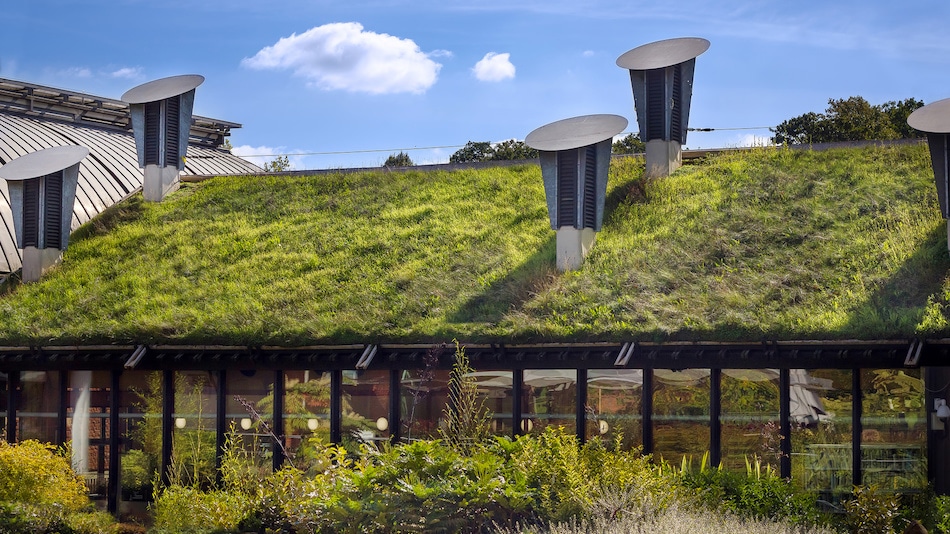
4 New Technologies in Sustainable Building
 In an ideal world, there would be no waste. All organic materials would return to fertilize the Earth while all man-made materials would be recycled and turned into new products. Our power would come from the wind, the sun, and the Earth, and not from an industrial plant. We might not be there just yet, but sustainable building technologies are getting more and more advanced every day. The best part is that green building technologies can make a home far more affordable by reducing the amount of money an owner spends on power, much like energy efficient updates and systems. See what’s new in green construction technology, and prepare to be hopeful about the future.
In an ideal world, there would be no waste. All organic materials would return to fertilize the Earth while all man-made materials would be recycled and turned into new products. Our power would come from the wind, the sun, and the Earth, and not from an industrial plant. We might not be there just yet, but sustainable building technologies are getting more and more advanced every day. The best part is that green building technologies can make a home far more affordable by reducing the amount of money an owner spends on power, much like energy efficient updates and systems. See what’s new in green construction technology, and prepare to be hopeful about the future.
1. Cooling Roofs
The dark shingles on a roof can rapidly exceed the ambient outdoor temperature to reach around 150° F. That heat will inevitably make its way into a home and force an owner to choose between comfort and a reasonable energy bill. A cool roof is designed to reflect that heat and lower the temperature of the shingles by upwards of 50° F. Cool roofs trap cool air inside and reflect the heat outdoors, keeping it from being absorbed into the house and heating the interior space. They’re especially recommended to those who live in urban areas who suffer from the dreaded heat island effect. The hustle and bustle in busy cities and suburbs may be fun, but it can also increase the temperature significantly (both indoors and out.) Homeowners can give the air conditioning and the environment a break with a cool roof.
1. Geothermal Heating
Geothermal heating is a way of using the heat inside the Earth to heat or cool the inside of a home. While surface ground may be frozen solid or boiling hot, the pipes buried several feet below that ground are experiencing a much more palatable temperature of around 60° F. The system involves sending a mixture of water and antifreeze through the pipes of the home to gather the thermal energy in the Earth below. Once that’s completed, the energy can be used to balance the temperature in any Anoka home (either to heat it during winter or cool it during summer.) This method uses some electricity to get the heat pump going, but the energy savings are far bigger than the expenditures.
3. Smart Glass
Smart is the new marketing word to describe practically everything, but Smart Glass has managed to earn its description. This developing technology uses small amounts of electricity to activate ions located on the glass. Once they’re charged, they can reflect the sunlight so the home can be cooled down without the help of the air conditioner. The best part about this new technology is that it gives owners far more control than they would with standard low-emittance windows. Research and development predict that these windows can cut down HVAC bills by up to a full 25 percent. Plus, it makes for a good lesson in thermodynamics for everyone in the home.
4. Biodegradable Home Materials
Continually producing new materials without addressing the old ones is the fastest way to turn the planet into a heap of garbage. Instead of using building materials that are designed to last forever or that contaminate the soil when breaking down, more homes are using materials that decompose naturally without harming the organic life surrounding it. From fiberglass to the very foundation of the home, the technology has managed to infiltrate practically every part of the home. For example, biodegradable paint is made with a combination of lime pigments, milk, and other natural materials. According to Luke Hancok, a manager and expert on post-construction residential cost on dumpsters & waste, the industry is yet to benefit and further advance in reduce, reuse, recycle.
5. Sustainable Insulation
Having quality insulation helps keep homes comfortable by protecting them against extreme heat and cold, and it also helps homeowners keep heating and cooling costs down to save money on utility bills by increasing energy efficiency. There are many different types of insulation homeowners can choose, and there are also green options that can do everything while also helping the environment. Here are five different sustainable construction material options homeowners can consider:
- Wool: Sheep are in no short supply and neither are their wool, which is flame and dirt resistant.
- Cotton: A substitute to fiberglass insulation, cotton is a renewable resource and doesn’t contain formaldehyde or any other dangerous chemicals.
- Aerogel: Made from silica, aerogel is comprised of 90% air and is only three times heavier than normal air, so a little weight goes a long way.
- Rigid polystyrene: While this sort of foam is made from plastic, it can be recycled so it doesn’t take up space in landfills.
- Icynene: This is a type of foam that is sprayed onto surfaces. It’s made castor oil, which comes from castor beans.
Any of these options can help protect a home from the elements, but they all have different grades of effectiveness as well as costs, so homeowners should research them thoroughly to find the option that’s best for them and their home.



